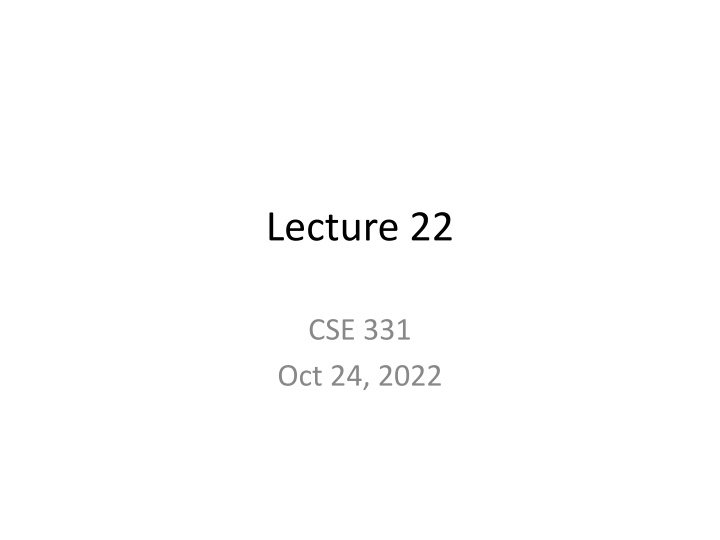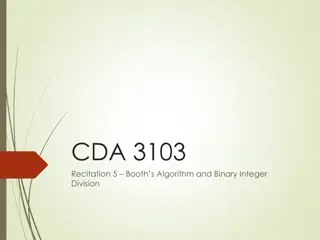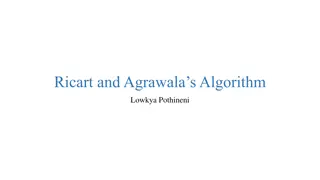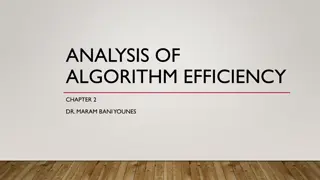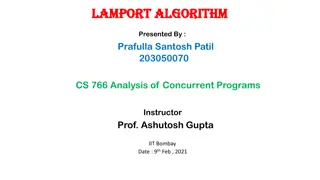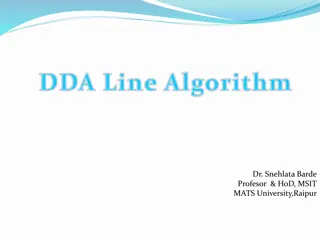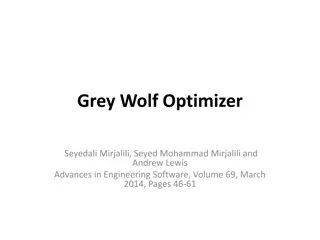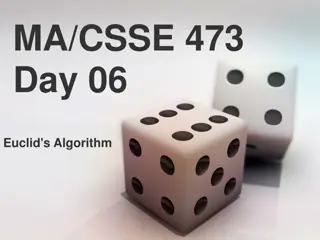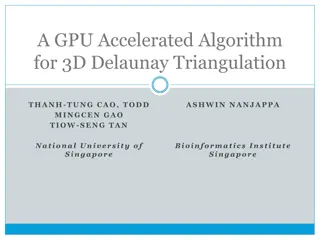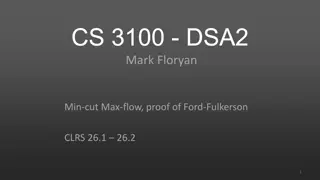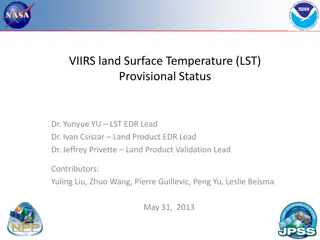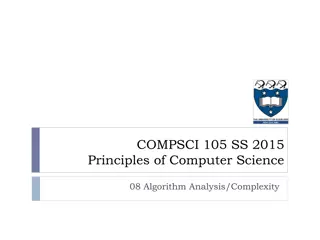Important Updates and Algorithm Insights
Stay informed with the latest project deadlines, group formation instructions, and upcoming 1-on-1 meetings. Dive into essential topics like Kruskal's Algorithm, Cut Property Lemma for MSTs, and the optimality of Kruskal's Algorithm. Get ready to enhance your understanding of algorithmic concepts and their applications.
Download Presentation

Please find below an Image/Link to download the presentation.
The content on the website is provided AS IS for your information and personal use only. It may not be sold, licensed, or shared on other websites without obtaining consent from the author.If you encounter any issues during the download, it is possible that the publisher has removed the file from their server.
You are allowed to download the files provided on this website for personal or commercial use, subject to the condition that they are used lawfully. All files are the property of their respective owners.
The content on the website is provided AS IS for your information and personal use only. It may not be sold, licensed, or shared on other websites without obtaining consent from the author.
E N D
Presentation Transcript
Lecture 22 CSE 331 Oct 24, 2022
Group formation instructions Follow instructions EXACTLY as they are stated
Guest lecture on Wed Trevor will run late night OH My 4pm OH canceled A. Erdem Sar y ce
Kruskals Algorithm Input: G=(V,E), ce> 0 for every e in E T = Sort edges in increasing order of their cost Joseph B. Kruskal Consider edges in sorted order If an edge can be added to T without adding a cycle then add it to T
Cut Property Lemma for MSTs Condition: S and V\S are non-empty S V \ S Cheapest crossing edge is in all MSTs Assumption: All edge costs are distinct
Todays agenda Optimality of Kruskal s algorithm Remove distinct edge weights assumption Quick runtime analysis of Prim s+Kruskal s
Optimality of Kruskals Algorithm Nodes V \ S S connected to red in (V,T) S Input: G=(V,E), ce> 0 for every e in E S is non-empty T = V\S is non-empty Sort edges in increasing order of their cost First crossing edge considered Consider edges in sorted order If an edge can be added to T without adding a cycle then add it to T
Is (V,T) a spanning tree? No cycles by design G is disconnected! Just need to show that (V,T) is connected V \ S S No edges here
Removing distinct cost assumption Change all edge weights by very small amounts Make sure that all edge weights are distinct MST for perturbed weights is the same as for original Changes have to be small enough so that this holds EXERCISE: Figure out how to change costs
Running time for Prims algorithm Similar to Dijkstra s algorithm O(m log n) Input: G=(V,E), ce> 0 for every e in E S = {s}, T = While S is not the same as V Among edges e= (u,w) with u in S and w not in S, pick one with minimum cost Add w to S, e to T
Running time for Kruskals Algorithm Can be implemented in O(m log n) time (Union-find DS) Input: G=(V,E), ce> 0 for every e in E O(m2) time overall T = Sort edges in increasing order of their cost Joseph B. Kruskal Consider edges in sorted order If an edge can be added to T without adding a cycle then add it to T Can be verified in O(m+n) time
Reading Assignment Sec 4.5, 4.6 of [KT]
High Level view of the course Problem Statement Problem Definition Done with greedy Three general techniques Algorithm Implementation Data Structures Analysis Correctness+Runtime Analysis
Divide and Conquer Divide up the problem into at least two sub-problems Recursively solve the sub-problems Patch up the solutions to the sub-problems for the final solution
Sorting Given n numbers order them from smallest to largest Works for any set of elements on which there is a total order
Insertion Sort Make sure that all the processed numbers are sorted Input: a1, a2, ., an Output: b1,b2, ,bn O(n2) overall b1= a1 for i =2 n Find 1 j i s.t. ai lies between bj-1 and bj Move bj to bi-1 one cell down a b 4 4 2 3 1 bj=ai O(log n) 3 3 4 2 2 4 3 1 4 O(n)
Other O(n2) sorting algorithms Selection Sort: In every round pick the min among remaining numbers Bubble sort: The smallest number bubbles up
Divide and Conquer Divide up the problem into at least two sub-problems Recursively solve the sub-problems Patch up the solutions to the sub-problems for the final solution
Mergesort Algorithm Divide up the numbers in the middle Unless n=2 Sort each half recursively Merge the two sorted halves into one sorted output
How fast can sorted arrays be merged? Group talk time
Mergesort algorithm Input: a1, a2, , an Output: Numbers in sorted order MergeSort( a, n ) If n = 1 return the order a1 If n = 2 return the order min(a1,a2); max(a1,a2) aL = a1, , an/2 aR = an/2+1, , an return MERGE ( MergeSort(aL, n/2), MergeSort(aR, n/2) )
An example run 51 1 100 19 2 8 4 3 1 51 19 100 2 8 3 4 1 19 51 100 2 3 4 8 8 19 51 100 1 2 3 4 MergeSort( a, n ) If n = 1 return the order a1 If n = 2 return the order min(a1,a2); max(a1,a2) aL = a1, , an/2 aR = an/2+1, , an return MERGE ( MergeSort(aL, n/2), MergeSort(aR, n/2) )
Correctness Input: a1, a2, , an Output: Numbers in sorted order MergeSort( a, n ) By induction on n If n = 1 return the order a1 If n = 2 return the order min(a1,a2); max(a1,a2) aL = a1, , an/2 aR = an/2+1, , an return MERGE ( MergeSort(aL, n/2), MergeSort(aR, n/2) ) Inductive step follows from correctness of MERGE
